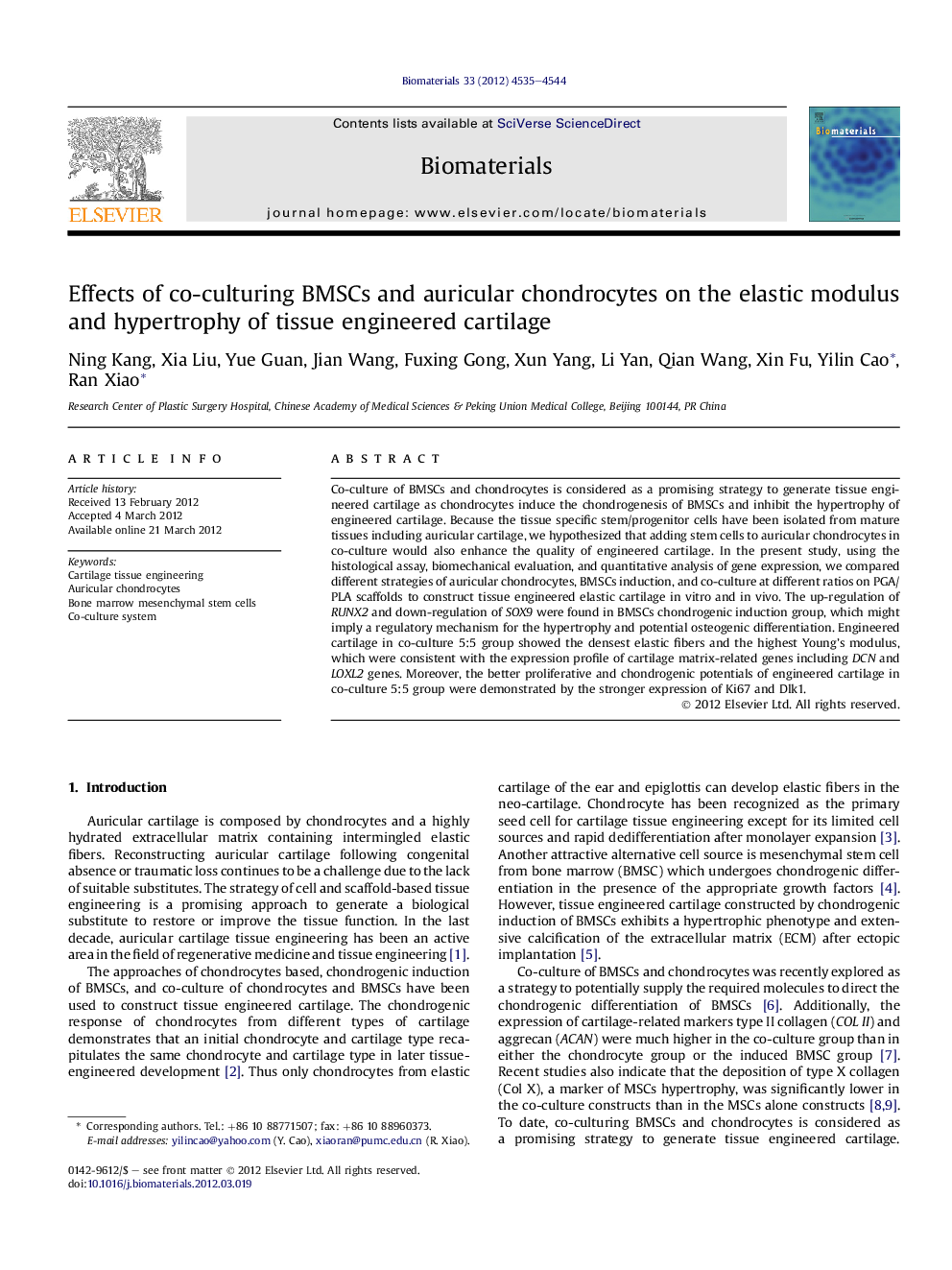| Article ID | Journal | Published Year | Pages | File Type |
|---|---|---|---|---|
| 6789 | Biomaterials | 2012 | 10 Pages |
Co-culture of BMSCs and chondrocytes is considered as a promising strategy to generate tissue engineered cartilage as chondrocytes induce the chondrogenesis of BMSCs and inhibit the hypertrophy of engineered cartilage. Because the tissue specific stem/progenitor cells have been isolated from mature tissues including auricular cartilage, we hypothesized that adding stem cells to auricular chondrocytes in co-culture would also enhance the quality of engineered cartilage. In the present study, using the histological assay, biomechanical evaluation, and quantitative analysis of gene expression, we compared different strategies of auricular chondrocytes, BMSCs induction, and co-culture at different ratios on PGA/PLA scaffolds to construct tissue engineered elastic cartilage in vitro and in vivo. The up-regulation of RUNX2 and down-regulation of SOX9 were found in BMSCs chondrogenic induction group, which might imply a regulatory mechanism for the hypertrophy and potential osteogenic differentiation. Engineered cartilage in co-culture 5:5 group showed the densest elastic fibers and the highest Young's modulus, which were consistent with the expression profile of cartilage matrix-related genes including DCN and LOXL2 genes. Moreover, the better proliferative and chondrogenic potentials of engineered cartilage in co-culture 5:5 group were demonstrated by the stronger expression of Ki67 and Dlk1.
